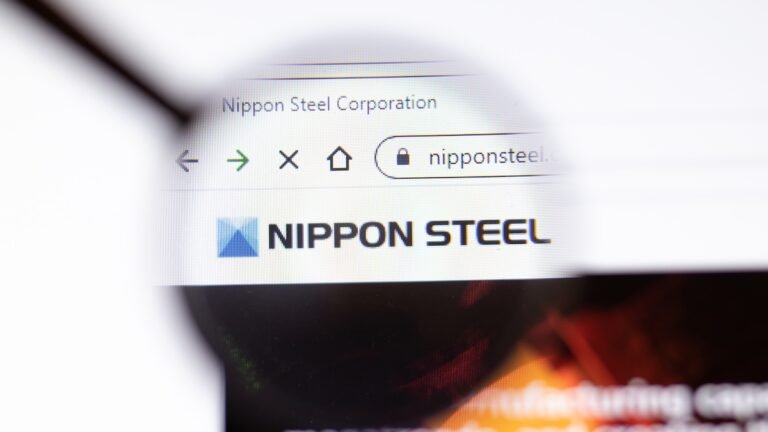Essential Insights
-
Data Breach Disclosure: Japan-based Nippon Steel Solutions revealed a data breach occurred due to the exploitation of a zero-day vulnerability on March 7, accessing sensitive information from customers, partners, and employees.
-
Exposed Information: The breach potentially compromised customer names, company details, email addresses, and phone numbers; partner business emails; and employee names and titles.
-
Investigation Findings: While the company has found no evidence of data being leaked on the dark web, they are investigating the situation further.
- Previous Incident Link: There are indications of potential links to a prior attack by the ransomware group BianLian, which claimed to steal data from Nippon Steel USA in February, though Nippon Steel has not confirmed a breach regarding that incident.
The Core Issue
On Tuesday, Nippon Steel Solutions, a subsidiary of the Japanese steel titan Nippon Steel, acknowledged a significant data breach triggered by the exploitation of a zero-day vulnerability. This incident unfolded after the company detected unusual server activity on March 7, prompting an internal investigation. Hackers successfully infiltrated the company’s network infrastructure, leading to potential exposure of sensitive information belonging to customers, partners, and employees. Specifically, the compromised data may include personal identifiers and professional details such as names, contact information, job titles, and affiliations.
The timing of this breach is noteworthy, especially in light of previous claims by the notorious ransomware group BianLian, which alleged the theft of hundreds of gigabytes of data from Nippon Steel USA earlier this year. While BianLian subsequently receded from the spotlight, it remains uncertain whether these two incidents are connected. Currently, Nippon Steel Solutions has not substantiated the claims of a data leak, as they have yet to find evidence of any data appearing on the dark web. This evolving narrative has attracted media attention, with outlets like SecurityWeek reaching out for further clarification on the situation.
Security Implications
The recent data breach at Nippon Steel Solutions, stemming from a zero-day vulnerability, poses significant risks not only to the company but also to its clients, partners, and the broader business ecosystem. The exploitation of such vulnerabilities jeopardizes sensitive data, potentially revealing personal and professional information—names, contact details, and affiliations—of stakeholders who rely on Nippon Steel’s services. This breach could lead to downstream effects, such as increased phishing attacks or identity theft directed at affected users, crippling trust in partnerships and threatening operational continuity for organizations associated with Nippon Steel. Moreover, as a subsidiary of a major conglomerate, the repercussions could ripple across various sectors, amplifying the urgency for robust cybersecurity measures and collaborative vigilance among enterprises to mitigate the implications of similar vulnerabilities in their own systems. The interconnected nature of digital infrastructures underscores that the fallout from this incident could catalyze broader security challenges, affecting business reputation and market stability well beyond Nippon Steel Solutions.
Possible Remediation Steps
The recent data breach at a subsidiary of Nippon Steel underscores the critical need for prompt and effective remediation in the face of zero-day vulnerabilities.
Mitigation Strategies
-
Incident Response Plan
- Activate emergency protocols.
-
Immediate Patch Deployment
- Apply patches for known vulnerabilities rapidly.
-
System Isolation
- Segregate affected systems to prevent further data leakage.
-
Threat Intelligence Monitoring
- Integrate threat intelligence feeds to anticipate potential attacks.
-
Employee Training
- Conduct awareness programs about security hygiene.
-
Forensic Analysis
- Engage cybersecurity specialists to investigate breach specifics.
-
Backup Restoration
- Utilize verified backups to restore corrupted data.
- Review Access Controls
- Audit and adjust permissions to limit exposure.
NIST CSF Guidance
NIST’s Cybersecurity Framework (CSF) emphasizes the necessity of continuous monitoring and response adaptability. For detailed remediation strategies, reference NIST Special Publication 800-61, which provides comprehensive guidance on incident handling and response.
Advance Your Cyber Knowledge
Explore career growth and education via Careers & Learning, or dive into Compliance essentials.
Explore engineering-led approaches to digital security at IEEE Cybersecurity.
Disclaimer: The information provided may not always be accurate or up to date. Please do your own research, as the cybersecurity landscape evolves rapidly. Intended for secondary references purposes only.
Cyberattacks-V1

